BUS7B33 Customer Continuity and Growth Assignment Sample
Introduction
Organisations are effectively positioned in the market competitiveness through robust and flexible communication strategy which endorses the product as well as a brand up to the wide customer base which in turn shapes the business objectives.
The communication strategy helps the organisations to popularise the brand awareness through interacting, educating and converting the potential consumers for the product line which accommodates the customer continuity and market growth for a positive profit margin. In this report, the detailed communication strategy of Sainsbury’s through different theories and models as well as an implementation strategy for gaining market efficiency will be discussed and developed promptly. BUS7B33 Customer Continuity and Growth Assignment Sample
Company Background
Sainsbury’s is a century-old retail supermarket offering groceries and processed food to the customer since 1869 which was originated in the United Kingdom by the couple John James Sainsbury’s and Mary Ann. Sainsbury’s has evolved through time with the diversification of product lines as well as brands of Argos, Habitat, Tu, Sainsbury’s Bank and Nectar to support the customers shopping through in-store as well as online platforms (Refer to Appendix 1). Sainsbury’s now operates successfully through over 600 supermarkets and 800 plus convenience stores with the efforts of 189,000 employees which helped the company to earn around £32 billion in revenue in 2020 (Sainsbury’s.co.uk. 2022).
Proposed strategy
Promotional mix
A promotional mix is a form of communication which integrates the set of marketing approaches comprising advertising, personal selling, public relation, direct marketing and sales promotion with a specific blend of tools for the marketers to optimise the promotional effort. The communication with the market through a promotional mix based on the objectives of creating awareness, increasing demand and product differentiation to the broader customer base will help the brand to gain market confidence. The company will be facilitated by the employees’ skills, adaptability, advertisement tools and content for consumer attraction and making purchasing decisions. Sainsbury’s will make profits through this communication model where several channels and tools are blended optimally to satisfy the consumer query as well as endorse the brand reputation exclusively. Sainsbury’s may reflect its product line of groceries and processed food products as per the customer interest and cultural preferences of the consumer for broader market penetration through promotion mix. However, the factors of product type, usability, complexity, purchasing quantity and frequency, product life cycle, market type and size are influenced by the promotion mix of any brand (Cohen and Perakis, 2020).24/7 Chat Support | Get A+ Grade | Written by Top-Notch Subject Experts | 20% Off 1st Order | Plagiarism Free | Turnitin Report |
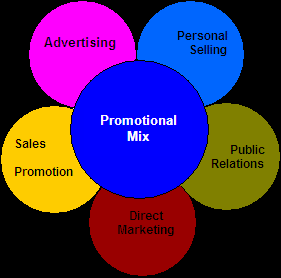
Figure 1: Promotional mix
(Source: Cohen and Perakis, 2020)
It will develop specific content for advertising the product line specific for supermarkets with the cultural and personal choice to develop a positive awareness of the brand as well as product in the consumer thought process. The personal selling, direct marketing and public relation in the promotional mix has depended upon the employee’s skills and abilities to interact and engage with a wide range of customers to position the product and brand highly for enhancing the market transaction (MESERET, 2021). Other than that, the sales promotion with the offer of discounts and coupons is helpful for Sainsbury’s to attract more and more consumers for continued business engagement.
Keller’s brand equity model
Keller’s brand equity model is a customer-based communication approach for the business organisation to focus on brand awareness, brand quality, brand loyalty and brand association to evaluate the journey of the customer relationship with the brand. It ideally stepwise evaluates and interacts with the consumer to create a roadmap for consumers’ satisfaction and loyalty through recognising at the bottom and resonating at the peak through collaboration with the brand. The framework of the Keller’s brand equity model is talking about salience at the start through deeply recognising the brand itself which gradually lined up for acknowledging the customer interest and preferences through market transactions and engagement with the brand. Other than that it analysed the performance, imagery, Judgements and feelings of the brand and customer to become responsive to assess and support the consumer choice in brand engagement (Mahmood, 2018).
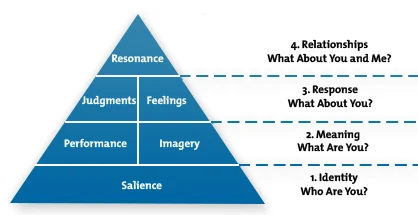
Figure 2: Keller’s brand equity model
(Source: Mahmood, 2018)
Sainsbury’s will communicate with the customer through the framework of Keller’s brand equity model for gaining deep insights of itself as well as customers to support the convenient shopping through conceptualising the uniqueness of each customer and individual interest in the brand. The brand equity framework is offering close engagement with the customer to endorse a diverse range of products and services for more interactive business relationships for continuity and growth through building consumer loyalty and trust (Apéria and Persson, 2018). Moreover, at the peak of the brand equity model, it reflects the relationship of the consumer with the brand Sainsbury’s in a resonating measure for a long-lasting business relationship through satisfying the consumer by offering products and promotions as per consumer specification.
Awareness, Interest, Desire and Action (AIDA) Model
AIDA model typically reflects the consumer thrift process for engaging in making purchasing decisions which correspond to the market sale of the product line for the business organisation, specifically, the model got its name through the acronyms of Awareness, Interest, Desire and action if the customer which is followed by the effective advertising steps to acknowledge and engage with the cognitive behaviour of the customer. This model of communication helps and coordinates the consumer at different steps to support the individual for the final purchasing of the product. The model is also referred to as a purchasing funnel for the consumer’s practice where consumers have to interact and communicate briefly to make a positive purchasing decision for incremental sales volume of the product (Ullal and Hawaldar, 2018).
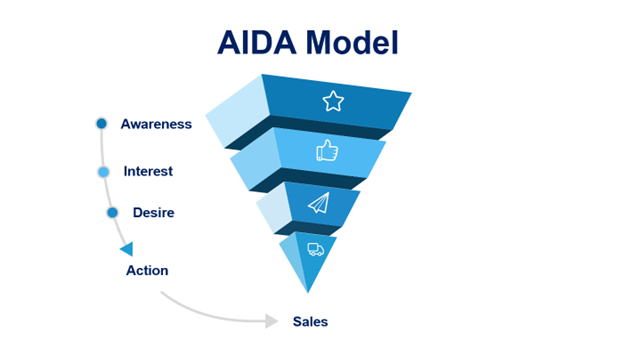
Figure 3: AIDA model
(Source: Ullal and Hawaldar, 2018)
Sainsbury’s may find this model of communication beneficial in its business for briefly acknowledging the consumer and funnel the customer with a positive purchasing decision which enhances the company’s business growth through market engagement. On a specific note, the advertising effect model is applied suitably to communicate with consumers with the elaboration of product awareness in the target audiences and interacts for actualising the individual interest. The AIDA model converts the advertising contents to communicate and change customer interest into the desire which influences the sales margin and makes the business profitable through different consumer perspectives (Pashootanizadeh and Khalilian, 2018).
Integrated marketing communication
Integrated Marketing Communication (IMC) on the other hand, is crucial for business communication which is prevalent in the age of digitization where consumers are more associated with the diverse market areas with the increase in the use of smart devices and the internet. It accommodates all the possible channels for communication with the market such as mobile apps, social media, multimedia, email marketing, print media, a newspaper, magazine, website search, social media share, video, blogs and other offline media to reach out the consumer base (Duralia, 2018). The multifaceted way of communicating with the customer is energising the brand awareness of Sainsbury’s to attract more customers with its business process.

Figure 4: Integrated marketing communication
(Source: Duralia, 2018)
On the contrary, the company has to control its IMC as it does not focus on cultural constraints based on which the food habits are mostly craved for. The different food habits of diverse populations help the company to engage with innovation and diversification of the product line to increase its existing customer base through Omni-channel communication of the product as per the interest of the target customer (Widjaja, 2022). Apart from that, it will help Sainsbury’s to deliberately keep itself updated with the market change as well as change in consumer preferences through social media conversation and engagement with a wider consumer base to promote and position its product in the market.
Implementation strategy
| Actions to be taken | What to implement | Ways to implement | Resource
Required |
Time required |
| Product | Defining each product line with a clear percentage of calories with quality, plastic-free packaging and other health benefits along with consumer choice and feedback | Sainsbury’s will use the AIDA model to endorse a product with clear forecasting of certifications for product quality, health quotient, eco-friendly processing and packaging, competitive price range (Guo and Wang, 2019), and value proposition by asking potential consumer feedback | Advertising channels, marketing management, Financial capital for market communication
and health institutes for certification and |
2-3 Months |
| Process | Making the process environment friendly with net-zero carbon emission, free of waste, and incorporation of Industry 4.0 for tracking the product life cycle within the Supply chain management (SCM) (Refer to Appendix 2) | The company have to use AIDA to broadcast the business process in aspect of viability for a sustainable future, mention the Industry 4.0 for real-time business engagement and efficient last-mile delivery with the freshness of the product (Bakharev et al., 2020) | Financial capital, technological artefacts, human resources and advertising channels | 5-6 Months |
| Brand | Omnichannel market engagement, Corporate Social Responsibility (CSR) activity, promotion on the public platform, discount, coupon, gifts | Sainsbury’s will use IMC for Brand reputation with its CSR activities of Sustainable Development Goal (SDG) (Refer to Appendix 3). This will develop the brand image positively in the minds of global consumers. | Financial capital, human resources and marketing management | 1-2 Months |
| Customer | Clear definition of customer segment based on demography and psychographic for fulfilling customer demand depending on the product where high-calorie food is not suitable for children and old age people and patient
|
Sainsbury’s need to use Keller’s brand equity framework to target the customer 20-55 age group of people from all income groups, cultural difference in food taking habits as vegan or non-vegan, low calorie and high-calorie food ingredients | Cultural competency, knowledge about culture, health professionals for channelling products suitable for different customer | 2-3 Months |
| Public relation | Interactive engagement, two-way communication, seasonal offers, loyalty benefits | The company has to advertise itself through a promotional mix offline as well as digital channels of mobile apps, websites and social media. Additionally, generate feedback from both in-store and digital channels, asking suggestions before product launch where Keller’s brand equity model will be useful for conceptualising the unique customer through Imagery, judgement, feeling and performance | Technological artefacts, Financial resources, dedicated team for social media interaction and analyser to influence consumers for participate in feedback giving | 1-2 Months |
| Innovation | Research and development for product innovation and diversification | The company will communicate the use of Electronic point of sale (EPOS) Radio-Frequency Identification (RFID) for managing inventory (Škiljo et al., 2020), and a Loyalty card for convenient shopping in omnichannel communication. Diversify the suppliers for collecting different food ingredients throughout the world, and practise the use of spices for developing different kinds of aromas, textures and tastes for processed food. Engage with master chefs with culinary practice to offer brand new food items to the customer | Financial resources, technical artefacts, food safety professionals, master chefs from around the globe | 2-3 Months |
| Team building | Exclusive information of employees and teams to support convenient shopping | Communicate the world about the team and employees with the top-down structure for customer engagement and feedback process through a promotional mix where employee skills and practices will be elaborated for better customer engagement for educating the product and brand with a high rate of conversion and retention | Human resource and communication media | 3-4 Months |
Table 1: Implementation strategy
(Source: Self-Created)
The implementation strategy of communicating the development of a marketing plan is significant for Sainsbury’s to interact with the broader market for the scope of continuity and growth of business objectives. It will focus on the product description, healthy benefits, eco-friendly packaging as well as enhanced product lifecycle through the AIDA model for funnelling the consumer purchasing decisions with increased sales. The sustainability drive for the process and brand with the activity of CSR need to be communicated through both AIDA and IMC for omnichannel presentation. Additionally, a high focus needs to be maintained on public relations, innovative products, quality checking, and strategic communications with customers along with developing team-building among Sainsbury’s workforce.
Conclusion
From the above discussion, it maybe concluded that strategic communication is important for the organisation where Sainsbury’s is optimising the communication through several models and theories to actualize consumer preference into the business process. It will uniquely represent its product, process, brand, public relation, innovation and team building through omnichannel presences with value creation for consumers to attract wide consumers into the business process.BUS7B33 Customer Continuity and Growth Assignment Sample
References
Apéria, T. and Persson, C., 2018, July. THE SUSTAINABLE BRAND EQUITY MODEL. A RETAIL STUDY MEASURING SUSTAINABLE BRAND EQUITY. In 2018 Global Marketing Conference at Tokyo (pp. 1239-1243).
Bakharev, V., Mityashin, G., Katrashova, Y., Strelnikov, A., Bugaenko, A. and Karachev, V., 2020, November. The Impact of Industry 4.0 Technologies on Retail Development. In Proceedings of the International Scientific Conference-Digital Transformation on Manufacturing, Infrastructure and Service (pp. 1-7).
Cohen, M.C. and Perakis, G., 2020. Optimizing promotions for multiple items in supermarkets. In Channel Strategies and Marketing Mix in a Connected World (pp. 71-97). Springer, Cham..
Duralia, O., 2018. Integrated Marketing Communication and Its Impact on Consumer Behavior. Studies in Business & Economics, 13(2).
Guo, L. and Wang, Z., 2019. Ratio analysis of J Sainsbury’s plc financial performance between 2015 and 2018 in comparison with Tesco and Morrisons. American Journal of Industrial and Business Management, 9(2), pp.325-341.
Mahmood, S.M., 2018. Building strong brand equity through developing and implementing strong brand strategy: in perspective of Bangladeshi supermarkets. South Asian Journal of Marketing & Management Research, 8(1), pp.19-34.
MESERET, H., 2021. THE EFFECT OF PROMOTIONAL MIX-ELEMENTS ON SALES VOLUME: THE CASE OF ANBESA SHOE SHARE COMPANY (Doctoral dissertation, ST. MARY’S UNIVERSITY).
Pashootanizadeh, M. and Khalilian, S., 2018. Application of the AIDA model: Measuring the effectiveness of television programs in encouraging teenagers to use public libraries. Information and Learning Science.
Sainsbury’ss.co.uk. 2022. [online] Available at: <https://about.Sainsbury’ss.co.uk/~/media/Files/S/Sainsbury’ss/documents/reports-and-presentations/annual-reports/Sainsbury’ss-ar2021.pdf> [Accessed 6 May 2022]
Škiljo, M., Šolić, P., Blažević, Z. and Perković, T., 2020. Analysis of passive RFID applicability in a retail store: What can we expect?. Sensors, 20(7), p.2038.
Ullal, M.S. and Hawaldar, I.T., 2018. Influence of advertisement on customers based on AIDA model. Problems and Prospective in Management (December, 2018) Vol, 16(4), pp.285-298.
Widjaja, G., 2022. What Experts Tell about Integrated Marketing Communication for Effective Business Promotion and Sale Strategy. Indonesian Interdisciplinary Journal of Sharia Economics (IIJSE), 5(1), pp.48-62.
Appendices
Appendix 1
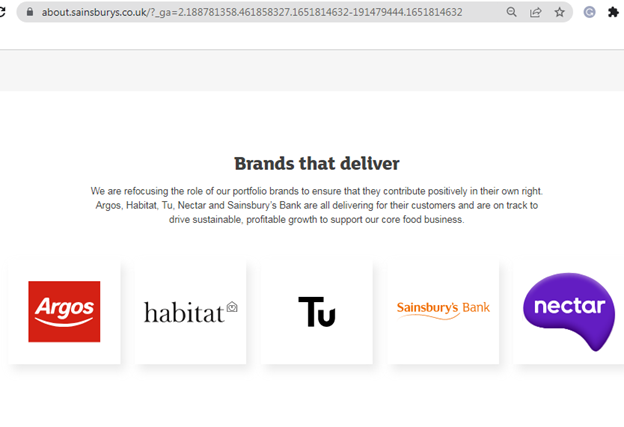
Appendix 2
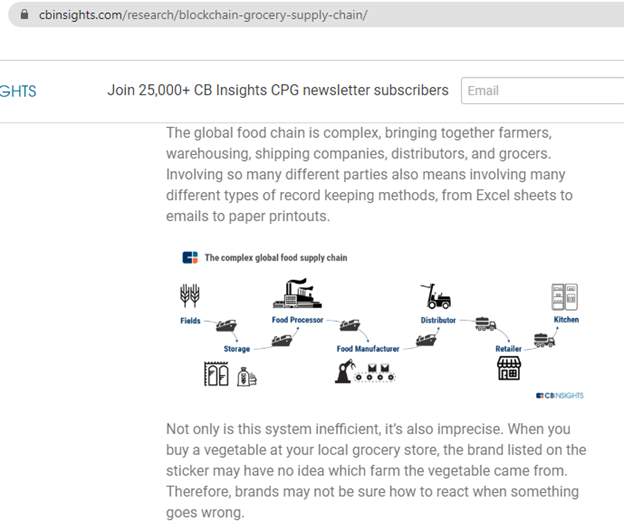
Appendix 3

Assignment Services Unique Submission Offers:

